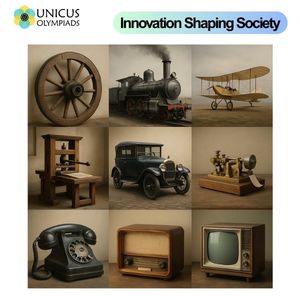

Throughout history, inventions have played a crucial role in transforming transport and communication. These innovations have made travel faster, more efficient, and more accessible, while also revolutionizing the way people share information across distances. From the development of the wheel to the advent of the internet, each invention has brought about profound changes in society, influencing the economy, politics, and culture. In this article, we will explore how key inventions in transport and communication have shaped the modern world.

The invention of the wheel, which dates back to around 3500 BCE in Mesopotamia, is one of the most significant advancements in transportation history. The wheel enabled the creation of carts, chariots, and other wheeled vehicles, revolutionizing how people moved goods and traveled over long distances.
The development of the steam engine in the 18th century, particularly by James Watt, marked the beginning of the industrial revolution and transformed transportation. The steam engine was initially used in mines but soon became central to trains and ships, dramatically improving the speed and capacity of travel and trade.
The invention of the automobile in the late 19th century, particularly with Henry Ford's introduction of the assembly line and mass production techniques, changed the face of personal and commercial transport. The automobile made individual travel more accessible and transformed cities and economies across the world.
The invention of the airplane by the Wright brothers in 1903 opened up the skies for travel and trade. Airplanes have since become the fastest mode of transportation, drastically shrinking distances and making global travel and communication quicker and more efficient.
The invention of the printing press by Johannes Gutenberg in the 15th century revolutionized communication by making written materials more widely available and affordable. Before the printing press, books and manuscripts were laboriously hand-copied, making them expensive and rare.
The telegraph, invented by Samuel Morse in the 1830s, revolutionized long-distance communication by allowing messages to be sent almost instantaneously using electrical signals. It was the first technology that enabled real-time communication over long distances, laying the foundation for future innovations in communication.
Invented by Alexander Graham Bell in 1876, the telephone transformed communication by allowing people to speak to one another over long distances, using electrical signals to transmit their voices.
The invention of the radio in the early 20th century allowed for the wireless transmission of sound over long distances. Radio became a major form of entertainment and news dissemination, especially in the 1920s and 1930s.
The television revolutionized both communication and entertainment in the mid-20th century. By combining audio and visual media, television allowed for the mass broadcast of news, entertainment, and educational content to homes across the world.
The internet, invented in the late 20th century, has had the most profound effect on communication. It has made instant communication, information sharing, and online services accessible to billions of people worldwide.